The Grand staff (or Grand stave in British English) is simply two sets of staff lines, one on top of the other. These staff lines are most usually a treble clef staff line and a bass clef staff line.

Each musical staff has five horizontal lines stacked on top of each other. These five lines consist of the five lines and four spaces. All music notes are written on these lines and spaces.
You will most likely see this combination of staff lines for keyboard instruments such as the piano and organ. However, you may also see it used for the marimba and harp among others!

So what is the point of using the grand staff? This Music Theory Lesson Will Demystify The Grand Staff For You!
Why do we need the Grand staff?
You may ask yourself but why can’t I just use one clef and make use of ledger lines to ensure I have all the notes. In theory this is a very valid point.
When ledger lines are added you can indeed easily add more notes. Take a look at our treble clef staff line below.

You can also use ledger lines for the bass clef staff as well.

As you can see we have been able to add many notes onto our treble clef and bass clef staff lines. But by using these separate staves (staffs) we have made the music much harder to read.
If you play an instrument that uses two hands, such as the piano and organ, then writing music like this will make playing extremely difficult. How will you know which hand to use for which notes? Let alone reading the notes and all those ledger lines quickly and effectively.
This is where the grand staff comes in! The Grand staff has two staves stacked one on top of the other. The top staff is usually the treble clef (G clef) and the bottom staff is usually the bass clef (F clef). By using the the treble and bass clef you can easily represent notes above and below middle C.
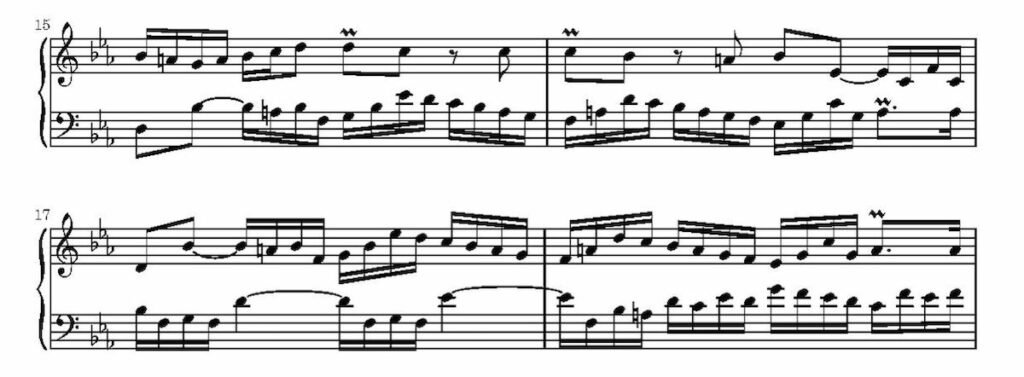
When using the grand staff for piano music or organ music, the treble clef staff (the top staff) will be played by the right hand and the bass clef staff (the bottom staff) will be played by the left hand. Essentially, the top line represents the high notes and the bottom line represents the low notes.
Exactly in the middle of these two staves you will see one solitary ledger line. This ledger line is called middle C. This is the only true ledger line in the middle of the two staves.

By separating the notes played like this we can make it much easier to read music for the piano or other keyboard instruments.
The Grand Staff – Treble and Bass clef Staff Notes
Let’s take a look at what the different notes in each clef are to help you see why this is so useful.
Grand staff notes: treble staff
Lets take a look at the notes in the treble clef staff. We have seen that middle C sits on the ledger line. As we move up we go up through the musical alphabet.

There are some great rhymes to help remember the notes in the treble clef. For the lines we say:
Every Good Boy Deserves Football (anything starting on these letters works!)

For the spaces we simply say FACE in the space.
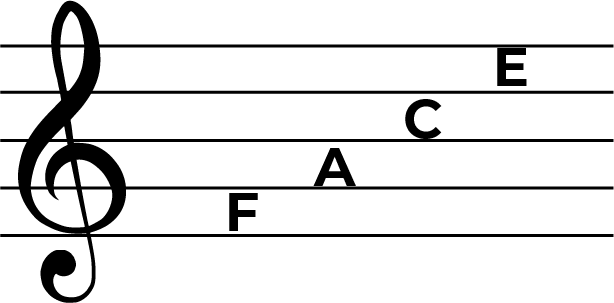
Grand staff notes: bass clef
Let’s take a look at the notes in the bass clef staff line. We have seen that the middle C sits on a ledger line just above the staff. You can then count backwards through the musical alphabet to work out the notes going down.

There are some great rhymes to help you remember the pitch names/notes for the lines and spaces in the bass clef.
For the lines, Good Boys Do Fine Always

For the spaces we can use All Cows Eat Grass
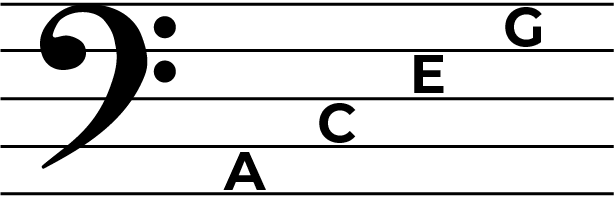
The Grand Staff in Use
The grand staff is used in almost all genres of music, including classical, rock, pop and more. Below you can see an example of some different music written using the grand staff.
The song Bohemian Rhapsody by Queen has a fantastic piano part that is transcribed with the grand staff.
How the Grand Staff is put together
The grand staff consists of two staves. These two staves are connected by a vertical line at the start. You will then see throughout the music bar lines that go all the way through both the upper staff and the lower staff connecting them into the grand staff!
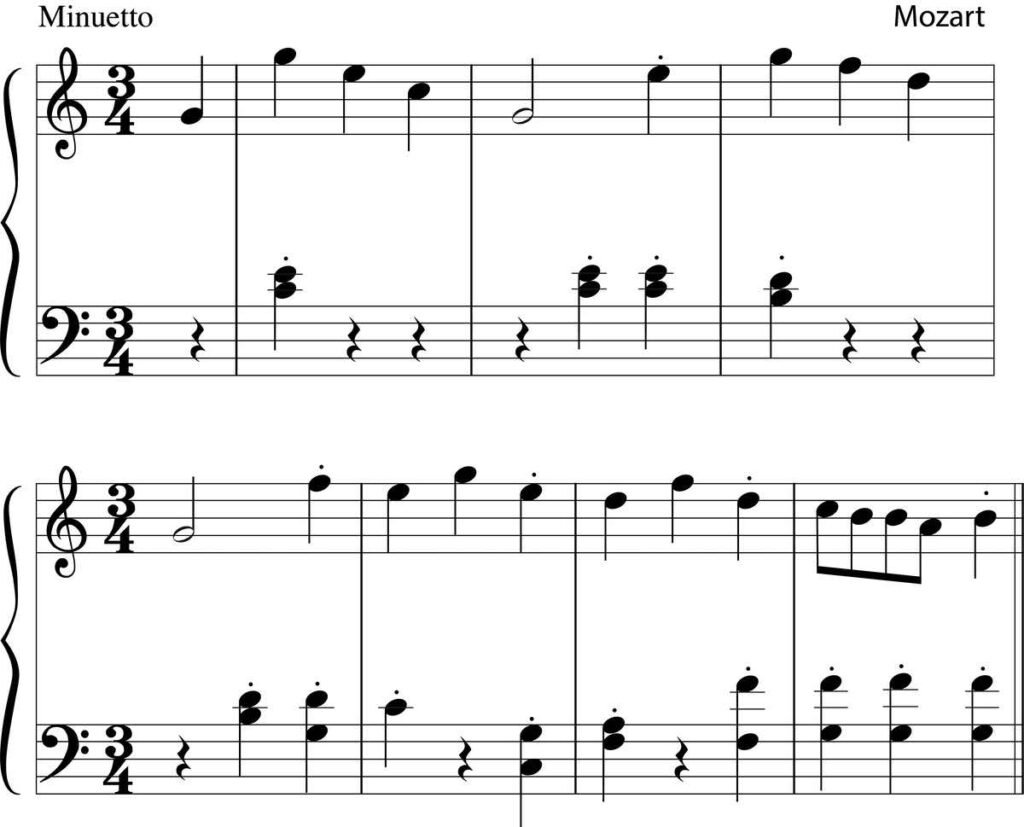
The two staves are also joined on the left side with what is called a brace. This brace indicates that the music should be played by one instrument such as the piano keyboard!

Playing music using the grand staff
When we play music using the grand staff it is extremely important to point out that they are not actually connected. Although the middle C ledger line is so called because it is in the middle of the two staves, in reality when reading music such as piano music or organ music we do use more ledger lines.
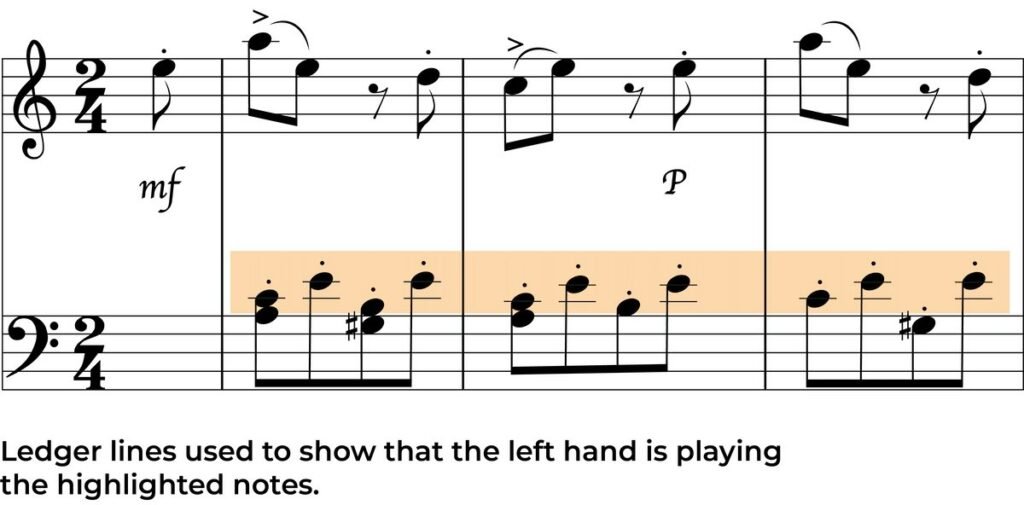
Notice how the notes on the grand staff are for two separate hands, the left hand and the right hand. These are two separate lines of music and when writing out the music this is taken into account.
Sometimes it is essential to use ledger lines if for example you want the left hand to play notes above middle C or you want the right hand to play notes below middle C.
Other Clef Combinations
The grand staff can sometimes also be seen with other clef combinations. Most usually we use the treble and bass clefs when talking about the grand staff.
However, it is possible to simply have two treble clefs.

You could also have two bass clefs.

It is also possible to have a clef change in the middle of a piece of music. Take a look below, the music begins with the treble and bass clefs and then a few bars in, the bass clef is replaced with the treble clef.

Music For Organ
The grand staff for the organ is slightly different to that of the piano keyboard. In organ music you will see three staves.
The top two staves will be the usual grand staff, but the bottom staff will be there to represent what the organ player should do with the pedals.
The bottom staff will use the bass clef for the pedals.

The top two staves are connected as we have seen with the usual grand staff, but the bottom staff is only connected by a vertical line at the start. The bar lines do not go all the way through all three stave lines.
